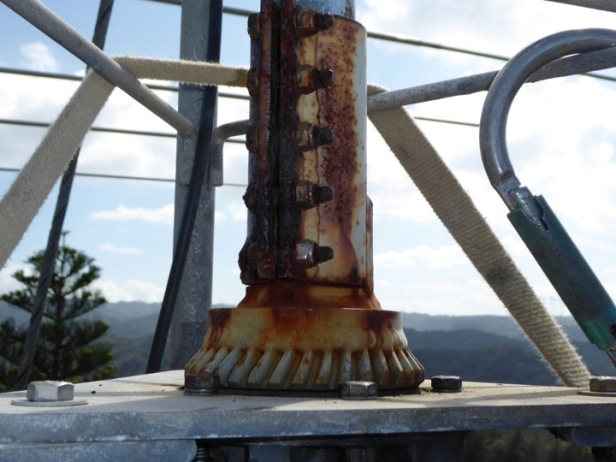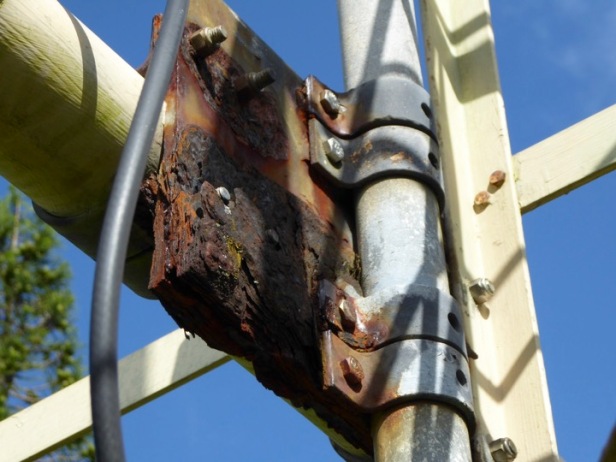Thanks to Kimo Chun, KH7U, for this Article.
Major contests held this past month include the ARRL International DX CW Contest and the CQWPX SSB Contest. The former had a number of stations operating from Hawaii in different categories. Jim Neiger, N6TJ, using Alex, KH6YY’s station on the north shore of Oahu, attempted to win a contest in the most recent of his decades of contesting. Unfortunately, based on claimed score submissions he fell short. He did admit that it is getting tougher to compete at that level as he gets older. My best wishes to Jim and it is great to know such an iconic contester. In the latter, conditions were poor but there were surprising spurts with some good openings to Europe on Saturday night. Eran, WH6R, whose call we used for WPX had a ball. I had fun on 40m before dawn working, 4E34A, A65DR, 9M2M, A73A, US1A, A96A, UP0L, 7Z1CQ, and RL4F among others using search and pounce, within 2 hours. I did have the luxury of using a custom built 4 element OWA (Optimized Wide-band Array) Yagi built by KH6ND.
Maintaining equipment or making improvements always seems to consume lots of time when you’re trying to keep your station ready for contests or for em-comm. This is magnified if you’re trying to keep multiple towers and station setups going as we have at KH6YY. The elements always win…meaning water. Well, the Sun plays a role as does wind. Nothing like the repeated pounding that trade winds do to break or loosen something.
Let’s get back to water. There is a rule: if it has threads on it and it will be outside use anti-seize compound. Besides plain zinc-plated and galvanized screws, this includes hot-dipped galvanized and stainless steel hardware. This is especially true when using dissimilar metals like stainless steel screws into aluminum housings (like Hy-Gain / CDE rotators). In Hawaii this rule is very critical. If you have any desire to remove the screw later you had better follow the rule. The one exception would be in high vibration situations where a thread-locking compound might be used instead. The thought that a screw will loosen due to the use of anti-seize is false. If loosening is an issue you should be using a locking washer or a jam nut. Be careful, however, different metals require different formulations of anti-seize compound AND ones NOT to use. You shouldobserve the specifications on the manufacturer’s label. If you have questions please feel free to contact me.
I will be installing a new, replacement HAM IV rotator at KH6YY on the 10M Yagi tower. KH6U, Doug Morgan, prepped the rotator by removing its various screws and putting anti-seize (with Nickel particles for the S.S.) on them before reinstallation. He also prepped used a new product that is sold on-line from various sources and from DX Engineering. It is made by Rust-Oleum and is called Never Wet. It is a two part spray on process that leaves a seeming tacky coat, opaque in color. It is hydro-phyllic in that it repels water. He painted virtually the whole rotator with it. It was also used on a new custom steel mast clamp made by K7NV for one of his prop-pitch rotator units we use at KH6YY. The old one, while painted, had suffered badly in the weather over the years. See the picture. Water will not adhere to this coating. It just runs off as if never being wet, as the name implies. I had to touch up nicks I made during installation but I am hopeful this will add many years to the life of this clamp. I will be using this product liberally from now on. Demonstration videos show objects being dunked in water and coming up dry.

I am also replacing painted steel boom to mast plates on some large 15M Yagis with overly thick custom 13” x 18” aluminum plates I designed that Universal Manufacturers cut for me. It looks as if they used one of those neat water jet cutting machines. The old plates are coming apart in layers as if they were built in laminations. See the picture.

Needless to say I have lots of things to attend to. With some of these new changes to materials and methods to preserve them I hope to free up more time for other pressing maintenance issues. Until next time, have fun and keep on working on those antennas. BTW, are there any younger (not yet senior citizens) folks out there who would like to help and learn to climb and maintain antennas? Please let me know. I could sure use some additional good help both on and off the tower.
73, Aloha,
Kimo Chun KH7U

Hi Kimo,
I have an MFJ apartment antenna on my balcony. The coil is external. The whip is connected to the coil by a flimsy copper alligator clip. Should I coat the coil with an anti-seize compound? Which one and how much? Will the compound affect the SWR?
Thanks.
Robert VA3AOD
LikeLike
I have forwarded your question to Kimo.
LikeLike
Robert,
Please accept my sincere apology. I did not visit the blog site until now. My article was forwarded by someone else and I did not think to follow it so I didn’t know there were questions posted here. If I missed a notification to that effect I am sorry that I failed to see it.
The design of your antenna is intended to be simple, inexpensive and versatile. The alligator clip-lead, of course, is the easy way to select a tap point along the coil to set a resonance. So, unfortunately, all points of the coil must remain conductive to allow for that connection. Some anti-seize contains metal particles to assist in compatibility and conductivity. The particles are usually suspended in some liquid base, often oil. The only way to know if it will work is to try it. However, too much might cause a bridge across the coil turns, shorting it out. You’d also have to select one that has chemically compatible particles with your coil material. Never-Seez has, I believe, copper particles. This is a case of incompatible metal contact. Look up the Periodic Table and discussions about dissimilar metals on the Internet. You can also do a search for anti-seize compounds and follow the manufacturer’s recommendations. Bostik is one such vendor but there are many others.
Keeping the coil clean and free of corrosion would be the normal state to maintain. Whether that requires occasional light sanding with an emery cloth or other means you must determine based on your situation. The same goes for your alligator clip and lead.
There are some anti-corrosion compounds sold like De-Oxit ( a product preceded by Cramolin by the same manufacturer). I believe the company is CAIG Labs or the like. It is often available at industrial electronic parts and electronic tool stores (not Radio Shack). You must follow directions. You might also address your questions to MFJ for their input.
Anytime you change the relationship between turns on the coil you risk changing its inductance value or performance.
I am talking about changing resonance of the assembly so, yes, it may change the SWR. Except for outright unintentionally shorting out turns the change may be simply compensated for by a slightly different tap point. Or it may change it beyond the design parameters and you won’t be able to just re-tune it.
I don’t think you’ll be running more than 100W on that antenna but you also must be aware of possible flash over when the normally clean insulation between the turns is adulterated by a foreign compound.
I hope you see this at this late date and it helps.
Kimo Chun, June 8, 2017. KH7U@ARRL.NET
LikeLike
Thanks Kimo. No problem with the delay in answering–I assume you have a life.
What you are proposing sounds somewhat risky. Because it ain’t broke, I won’t
try to fix it. Despite the poor quality materials, the antenna does work when propagation
is good.
LikeLike